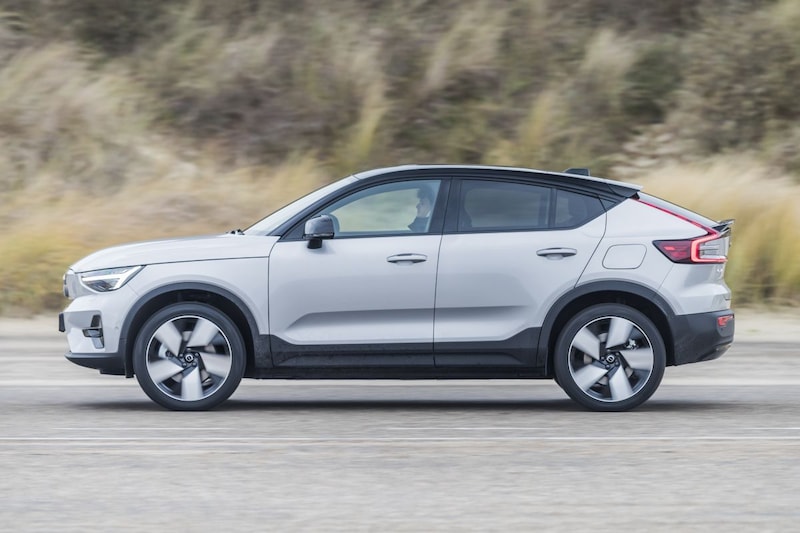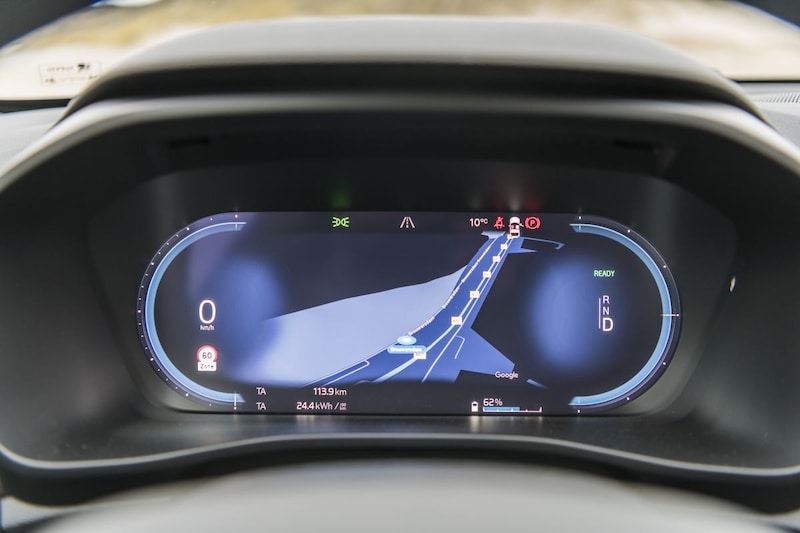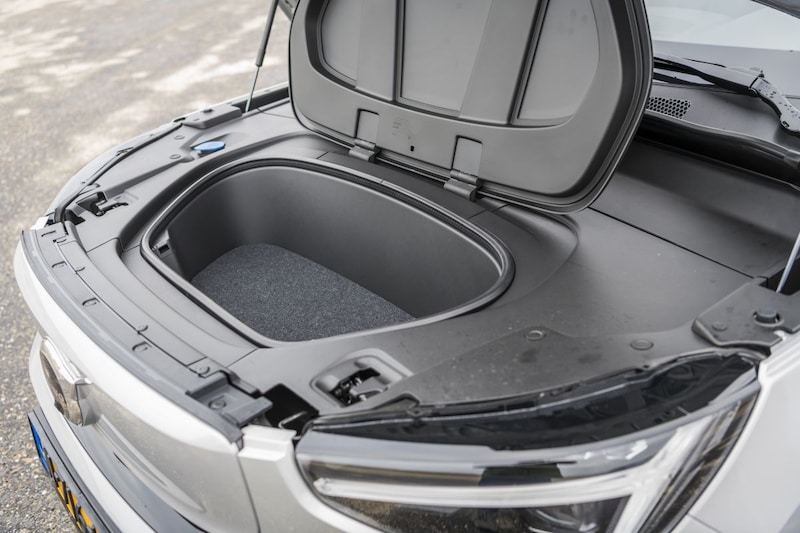All information about the Volvo C40 Recharge Pure Electric


According to its makers, the C40 is “the first Volvo designed exclusively for fully electric propulsion” in this test. Nevertheless, the car has strong similarities with the XC40, both visually and technically, albeit with a more graceful body. What is the added value of the Volvo C40 Recharge Pure Electric? We assess that in this test.
What is the Volvo C40 for a car?
In short, the Volvo C40 is nothing but an XC40 with a sloping roofline and a unique butt. After the XC40 has undergone a facelift, the initially different nose – with optional pixel LED headlights on the Ultimate version – is already a thing of the past. Due to its different design, the C40 is an alternative for people who would choose an Audi Q4 e-tron Sportback or a Tesla Model Y based on the design. The Ford Mustang Mach-E is also an important competitor of the C40.
The Volvo C40 is half an inch lower than the XC40. Due to the sloping roofline, the load volume has become slightly smaller. That is, when the rear seats are folded down. With the bench in position, there goes 415 liters in the back, just as much as in the XC40. When you fill the cargo hold up to the ceiling, it can carry a load of 1205 liters. The more angular XC40 will fit 90 liters more. The loading floor is completely flat, and there is no question of a lifting sill. There is still a small frunk in the front.
The electrically powered Volvo C40 Recharge Pure Electric with a single electric motor has a maximum towing weight of 1500 kilos, the more powerful Pure Electric Twin with its two electric motors and four-wheel drive can tow 1800 kilos. That is a considerable weight for an electric car.
What does the C40 look like inside?
As a total package, the Volvo C40 feels like a premium product. The seats are very nice, the dashboard is clear and calm in design, and the finish is at a high level. Volvo uses Android Automotive, Google’s infotainment environment, for operation. The system is not as extensive as that of, for example, the Ford Mustang Mach-E, but you can add apps yourself. The menu structure of the central screen is clear and the navigation works via Google Maps.
The screen behind the wheel provides extensive information and can also display the navigation map, for example. A miss is that the Volvo only predicts the range when the battery is almost empty. Although a pretty accurate prediction (albeit not as accurate as Tesla), we would have preferred this information to be shown all the time. You can call up a table with figures about consumption and kilometers, but it also disappears automatically.
It will come as no surprise that the Volvo C40 does not offer too much headroom due to its sloping roofline at the rear. And as with the XC40, legroom for the rear passengers is also limited. But what bothers us more is the downright bad view to the rear. To create something of headroom in the back, the flap is actually just too short. As a result, the top edge of the already small rear window is so low that the headlights of most vehicles behind are simply not visible in the dark. There is also no rear window wiper, although the combination of cameras and parking sensors is a reasonable solution.
In which engine variants does the Volvo C40 come?
Initially, Volvo only supplied the C40 as a Recharge Twin, like our test car. This version has the same powertrain as the fattest version of the Polestar 2 and the Volvo XC40 Recharge Twin. Two electric motors distribute no less than 408 hp over the front and rear axle, making the C40 almost laughably fast. The 0-100 sprint is beeped in less than five seconds. For the lover of raw speed, the Volvo C40 Recharge Twin is definitely tempting. Volvo is building a battery pack with a capacity of 78 kWh in the twin-engine C40, of which 75 kWh can be used. During the test (in cold weather conditions) we noted an average power consumption of 27.6 kWh/100 km (Volvo: 19.9 kWh/100 km). That certainly does not make the C40 Recharge Pure Electric Twin a miracle of economy. A realistic range of 271 kilometers (Volvo: 449 km) lies ahead.
Of course, the C40 Recharge Pure Electric with a single electric motor is less fast, although you are certainly not underserved with a power of 231 hp. Because you are still at 100 km/h in 7.4 counts. This version of the C40 has a 69 kWh battery, of which 67 kWh is usable. Because the car is slightly lighter and ‘drinks’ less energy than the version with two engines and a larger battery, it should be possible to cover a distance of 438 kilometers on a battery charge with the stated power consumption of 18.0 kWh/100 km. This makes this cheaper C40 hardly inferior to the more expensive twin-engine version. A heat pump is standard on the Plus and Ultimate, on the basic version Core an additional cost of just under a thousand euros has to be paid (including steering wheel and seat heating).
Is the Volvo C40 a sporty driving car?
Even though the Volvo C40 Recharge Pure Electric Twin is a very fast car, the emphasis is much more on comfort than on dynamics. The Volvo C40 drives safely and predictably, and will seem a bit dull and distant to the driver with a sporty driving style. But the C40 does offer a lot of refinement. Without hovering over the road like a flying carpet, it neatly smooths out unevenness in the asphalt. Driving noises remain far in the background.
How is safety in the Volvo C40?
Volvo has always been a brand that considers not only the safety of its occupants of paramount importance, but also that of other road users. The price list of the Volvo C40 therefore starts with a laundry list of standard safety features. Digital cameras and radars scan the area around the car for imminent danger, and ensure that the car is automatically stopped if a cyclist, pedestrian or large animal suddenly appears – even in the dark. Traffic sign recognition, a fatigue alarm, an active lane assistant and an avoidance assistant are standard, as is Connected Safety, which uses information from the cloud to warn of slippery conditions or a dangerous traffic situation on the route. And we haven’t even listed all the safety features yet. The more expensive Plus and Ultimate are also equipped with adaptive cruise control, blind spot warning and a system that intervenes if danger threatens when reversing. The pixel LED headlights are only available on the Ultimate trim.
In which versions is the Volvo C40 available?
The Volvo C40 was initially only sold as a very complete and attractively priced Intro Edition. That version was about €10,000 cheaper than an equivalent XC40 Recharge Pure Electric. But Volvo has now reversed that, and you pay €1000 to €1500 more for a C40 – depending on the engine variant and version.
The C40 with 231 hp is available in three versions: Core (from €48,495), Plus (+ €4000) and Ultimate (another + €3500). The version with two engines and 408 hp (+ €6500 compared to the 231 hp version) can not only be ordered as Plus or Ultimate. Compared to the Core, the Plus includes adaptive cruise control, an electrically operated tailgate, an air purification system, seat and steering wheel heating and a heat pump. The Ultimate adds electric seat adjustment and a Harman Kardon audio system with 13 speakers.
The choice of AutoWeek test coordinator Marco Gorter
Due to the higher power consumption and the substantial additional cost, the version with two motors is not recommended. Certainly not because the single engine is fast enough. In terms of design, the Plus is a good starting point, since a more efficient heat pump and seat and steering wheel heating in an electric car provide a greater range in winter.
.
– Thanks for information from Autoweek.nl





